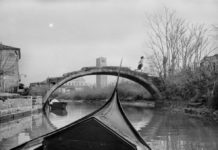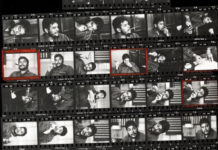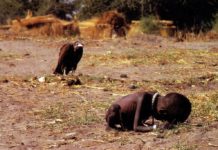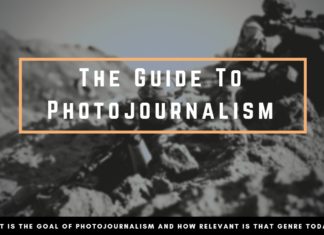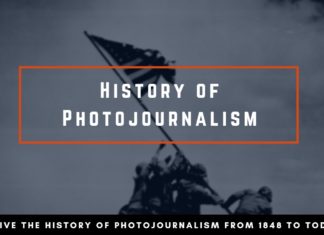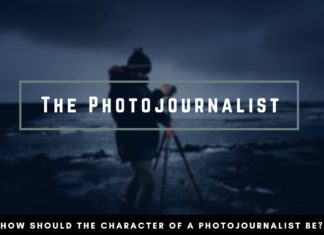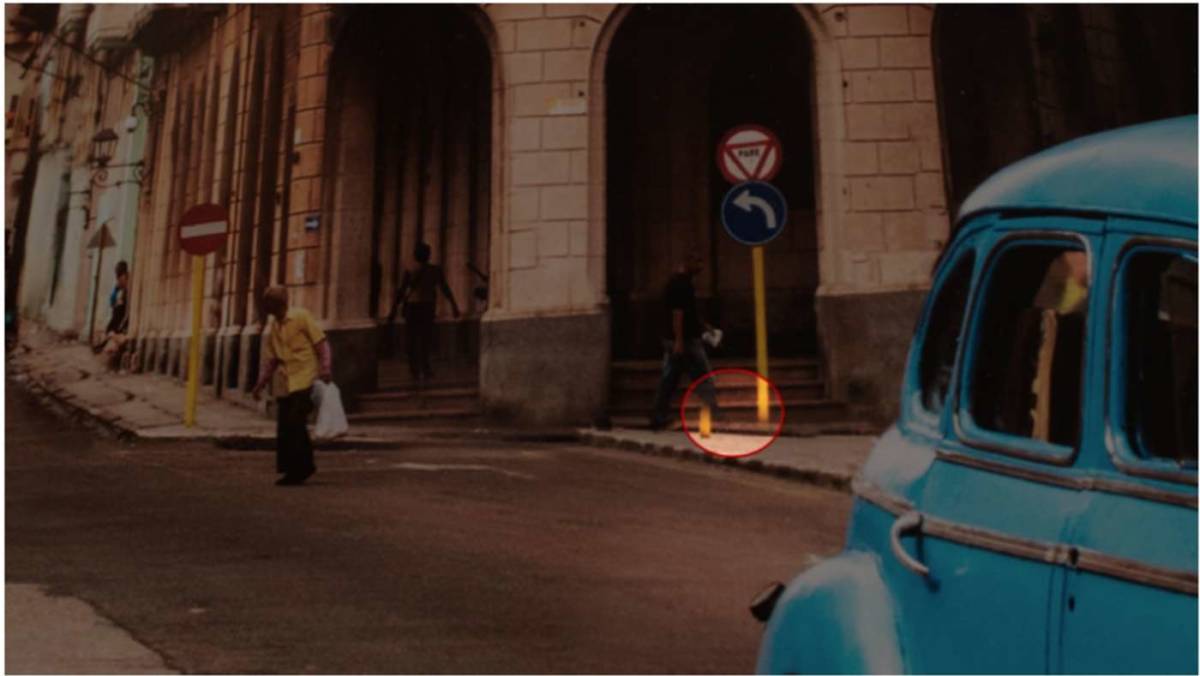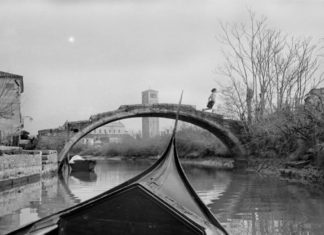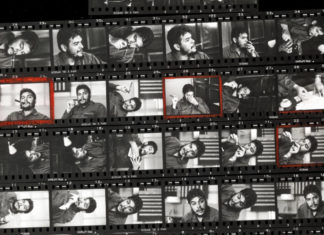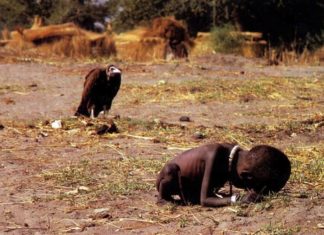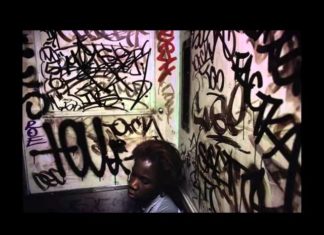During my travel in Southeast Asia, I wanted to invest a lot more time into Documentary Photography than I am normally doing in Berlin. Street Photography is great and I enjoy it very much. It is a great relieve from stressful everyday life and I like the challenge of it.
After doing Street Photography for some time, I believe that doing a long-term photography project in the form of a Social or simple Documentary Photography work has a lot more value than a single Street Photograph.
In the following, I want to give a comprehensive inside into the world of Documentary Photography and support You if You are interested in doing such long-term photography series Yourself.

Documentary Photography vs Street Photography
When I got interested in Photography and started actively photographing in 2015, I was interested in both, Documentary as well as Street Photography. By the nature of it, I was more focused on Street Photography, because it doesn’t require more than just a camera and some interesting scenes that I can find in the city.
Street Photography doesn’t require much planning, You can do it everywhere and any time You have a camera with You. In that sense, it is “easy” and one of the purest forms of photography.
Of course, as Street Photographers we know, that good Street Photography is one of the most difficult exercises You can look for. You need to be bold, be able to leave Your comfort zone and apart from the right mindset need to be a good Photographer as well. Which can be very tough when You have to act very quickly and on the spot.
In early 2015 I also made the decision to pursue a small Documentary Project pretty much for myself.
Compared to Street Photography, there went a lot more work into that project to acquire enough photographs to tell a compelling story. Then there is always the risk, that Your photographs and the series don’t work out as planned.

You might have a rough storyline in mind, but reality shows that You are unable to follow this direction and need to adapt. If push comes to shove, You have to abandon this project and all the work might be in vain. That is a risk, but also keep in mind that the time You spend in photography is a learning experience, always.
Then there is also the other side, where it feels a lot more rewarding for me to finish a project successfully than capturing a great Street Image.
With a completed Documentary Project, You are able to present a cohesive body of work. A collection of images that are connected, tell a story and are the result of a lot of invested work hours feels like a huge accomplishment.
Is Documentary Photography superior to Street Photography?
Now that I praise Documentary Photography in the highest form, You might ask Yourself I see Street Photography as an inferior genre.
If we have a look at the history of Photography and the impact that both forms of Photography have, then that is difficult to describe. There are some Documentary series that had a lot of impact on culture or even politics.
Think about Robert Capa’s “D-Day” that shows the reality of war, Sebastiao Salgado’s “Workers”, where You gain insight into the rough conditions of workers around the world, or Robert Frank’s “The Americans” – a portray of the American society.
Then there are also single images from Street Photography that maybe, didn’t have the same political impact, but also have found their way into popular culture.
Vivian Maier is well known outside the “photography scene” and other photographs are also well known, even though most people wouldn’t recognize its Street Photography background.

Jeff Mermelstein
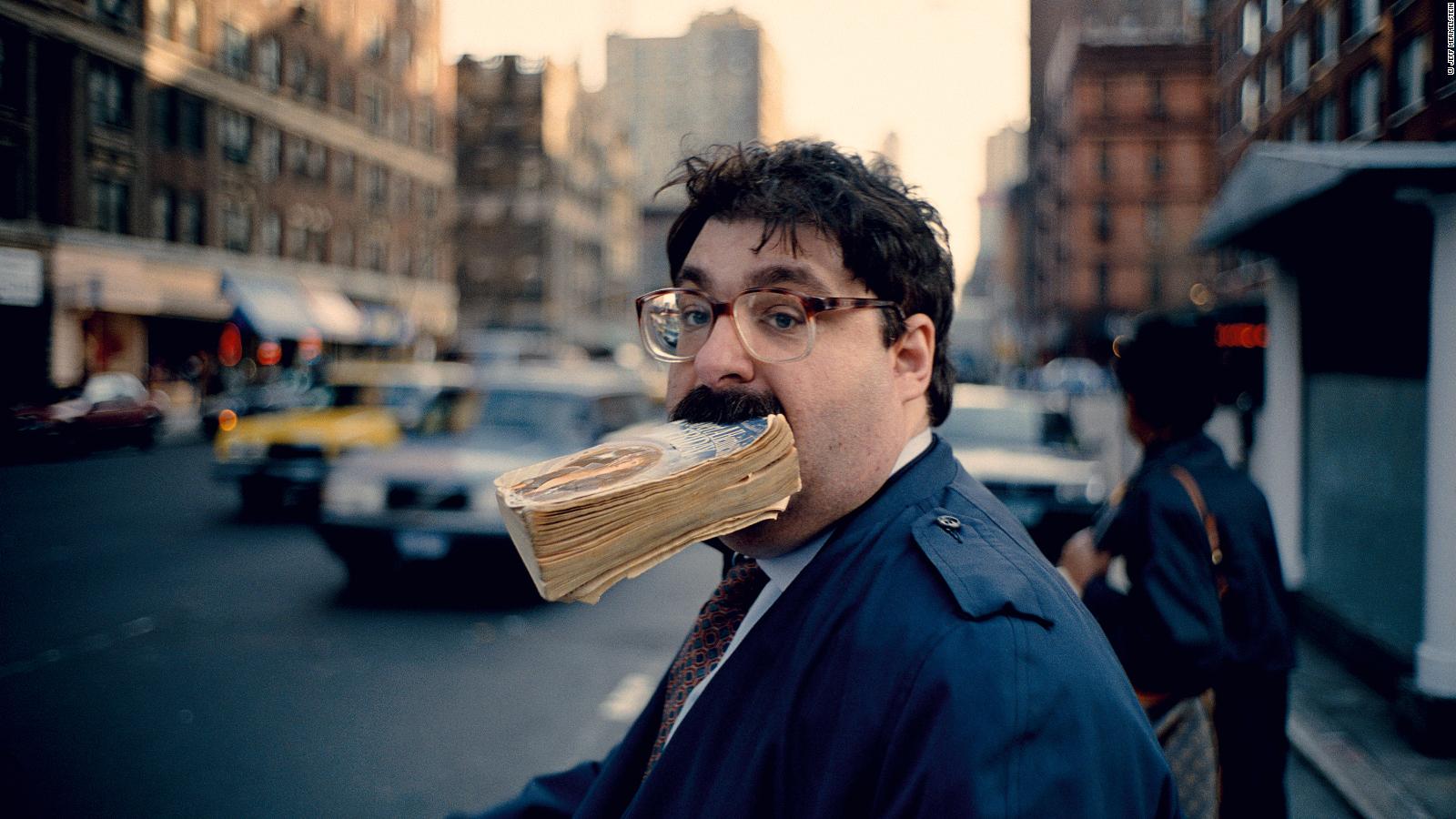
William Klein
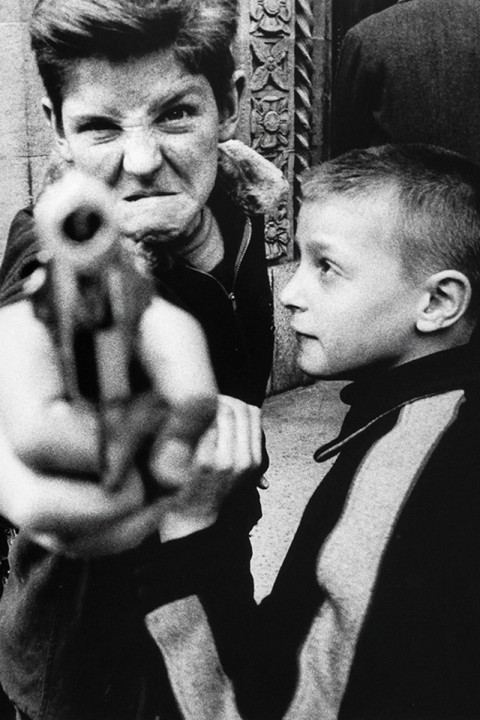
Joel Meyerowitz
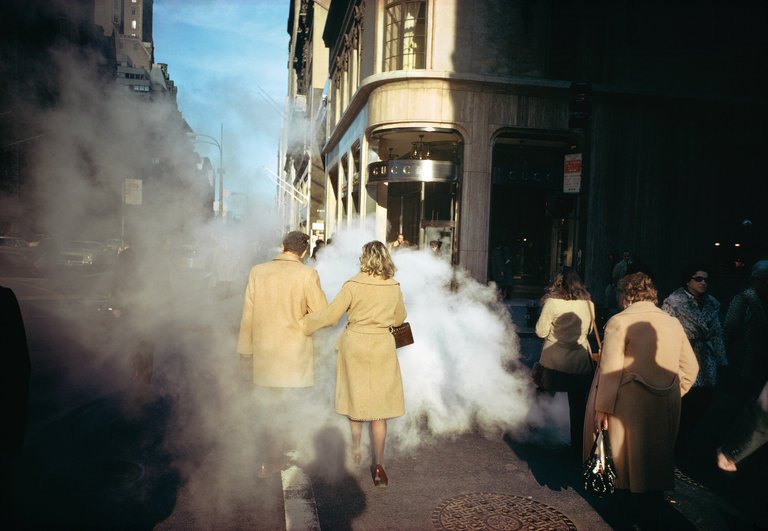
These are all images that might be more entertaining than telling a serious story in comparison to most Documentary Photography projects, but entertainment is a legit value.
To come to a conclusion, I wouldn’t say that one is superior to the other.
It comes down to the individual project or photograph and its quality.
Both can have a great impact and provide value to society.
Why You should try Documentary Photography
You may be content with just doing Street Photography and don’t see the benefit in Documentary Photography, but even if You don’t want to pursue Documentary Photography more seriously, beginning a project can also help Your everyday Street Photography.
Storytelling
Documentary Photography has a greater emphasis on storytelling throughout a series of pictures than Street Photography. In Street Photography, photographs are more loosely connected, whereas in Documentary Photography the Photographer tells a story from beginning to end.
To tell a compelling story You need the typical structure of beginning, middle, and end. Throw in some interesting twists to create tension and keep the story interesting.
Try to integrate at least some of the tension also in Your Street Photography by arranging the images in a way, that an interesting story can be told, even though the subjects are not related to each other.
Getting Closer
As Robert Capa already told, “if Your pictures aren’t good enough, You aren’t close enough”
Street Photography can be done from a distance if You are too scared to get close and fear the reaction of other people.
Documentary Photography is different in the way, that You need to go in and tell the story, not from a distance, but from the inside. You want to draw the viewer right into the scene and not built an invisible wall.
You also need to speak with the people and form a connection to be able to tell their true story.
That connection can be difficult to form in Street Photography since the subjects are unknown and in candid Photography You shouldn’t interfere with the scene. Nonetheless, Your photographs will benefit from getting closer and for example getting some eye contact.
Engage in new Topics
Apart from fine-tuning Your photography skills, Documentary Photography also allows You to dive deep into new topics that have always interested You but didn’t fit into Your Street Photography work.
By creating long-term projects You will have the opportunity to look beyond the pond.
This will not only satisfy Your own curiosity but also can inspire Your everyday Street Photography work.
Create a Book
Since Your goal in Documentary Photography is to tell a story from beginning to end, it is much easier to actually finish the project.
A lot of Street Photography projects are rather open-ended. They focus different themes and most often don’t tell a classic story.
With a project that has a much more clear focus on the story, You are able to finish, once You are confident that You have all the photographs that You need and are sufficient to represent Your project.
Once You have reached that point, You should create a book, just for Yourself or at least for some friends.
Creating a personal Photography Book is a huge accomplishment and is a great motivational boost.
In addition, You have a product that will last for an eternity, other than digital images, that might be lost in the depth of some hard-drive.
Personally, it is also a much better feeling to flick through the pages of a book than staring at a digital screen.
You can create a personal photobook for example with the online service Blurb.
More Than War Photography
When thinking about classic Documentary Photography, we heavily think about war photographs and photojournalism depicting suffering. If You live in a safe area and believe that Your neighborhood is too boring for an interesting story than You are wrong.
Documentary Photography is a lot more than just picturing negative emotions and I want to present some ideas for Your own projects.
War brings out the most intense emotions in humans. From pain, grief, mourning to also relieve and cheerfulness in an environment where You would least expect it.
In the early days, War Photography also had the function to inform people and obviously been used as propaganda as well.
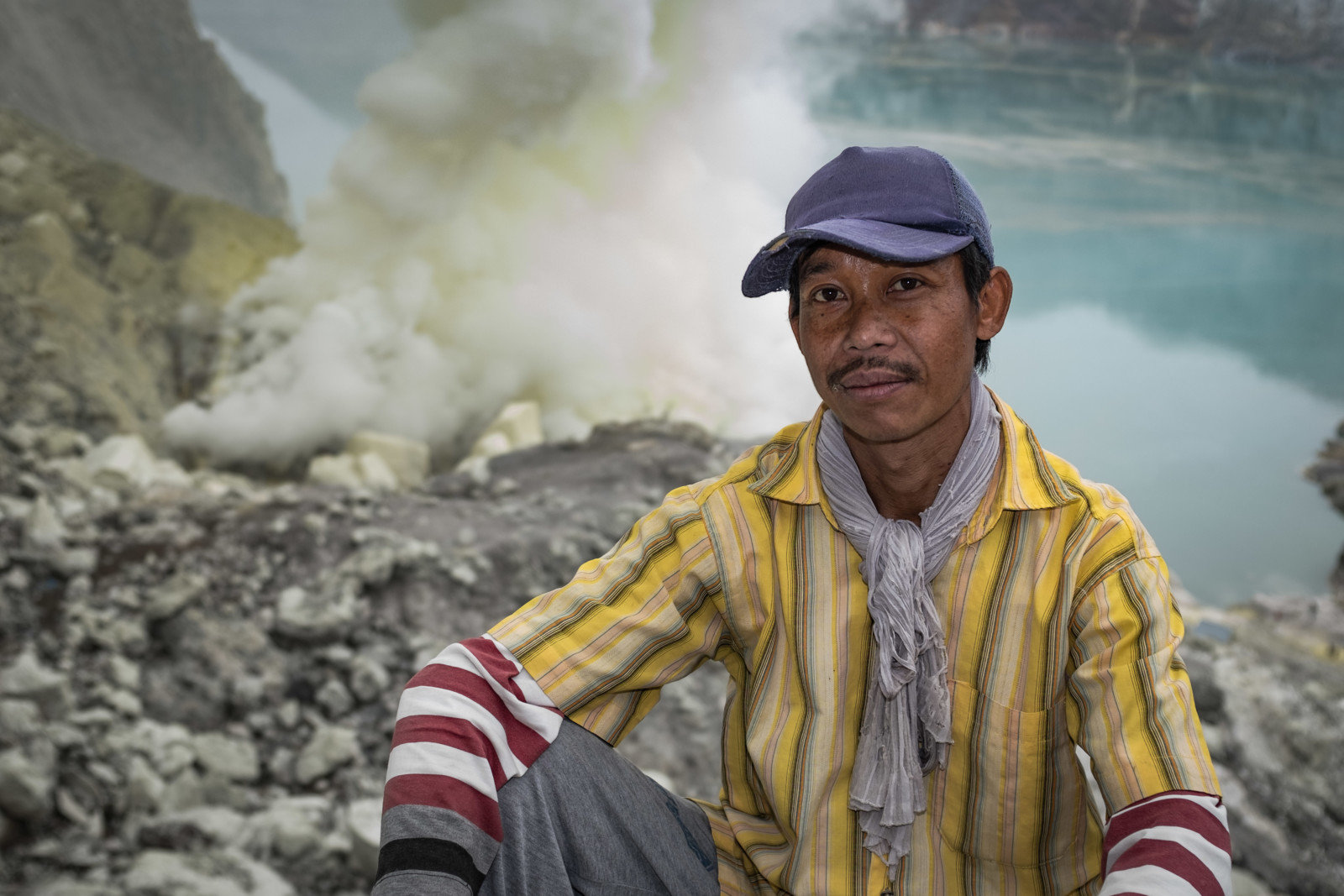
Therefore the history of Documentary Photography is strongly tied to conflicts and a lot of iconic images would stem from those.
Unfortunately, this also leads to the spillover, that even outside of conflict zone, often the suffering of people is depicted. Popular topics include homelessness, drug abuse or racism.
Those are important topics that are worth documenting of course, but life has a lot more to offer.
How to find the right Photography Project
Pursuing a Photography Project is a huge time commitment. Other than Street Photography, in most cases, You can not simply go out on the street and take pictures just as you walk around the block.
For the most part, You need a group of people that You want to portray, some events under a certain topic, or other activities that are time-consuming.
The easiest way to find an interesting topic is by following personal interests of Yours.
Projects don’t need to be super fancy or extravagant, often times some insight into “mundane” fields can be interesting too.
If You are into sports, You could follow a local football club and catch the emotions surrounding the games.
Or maybe You are a music fan. Then You could try to follow a favorite local band of Yours, or simply document the backstage atmosphere.
Then there also all kind of professions that could be interesting to follow for some days.
Whatever You do, the easiest way to find an interesting photography project is by simply following Your own passions. Don’t be intimidated because You are afraid that Your project might be too boring. The project should be for Your own benefit in the first place and not please some figurative audience.
Famous Documentary Photographers
Now I want to introduce You to some outstanding Documentary Photographers & Photojournalists whose work should inspire You for Your own personal project.
In addition, I present their most notable book that You can include in Your collection.
James Nachtwey
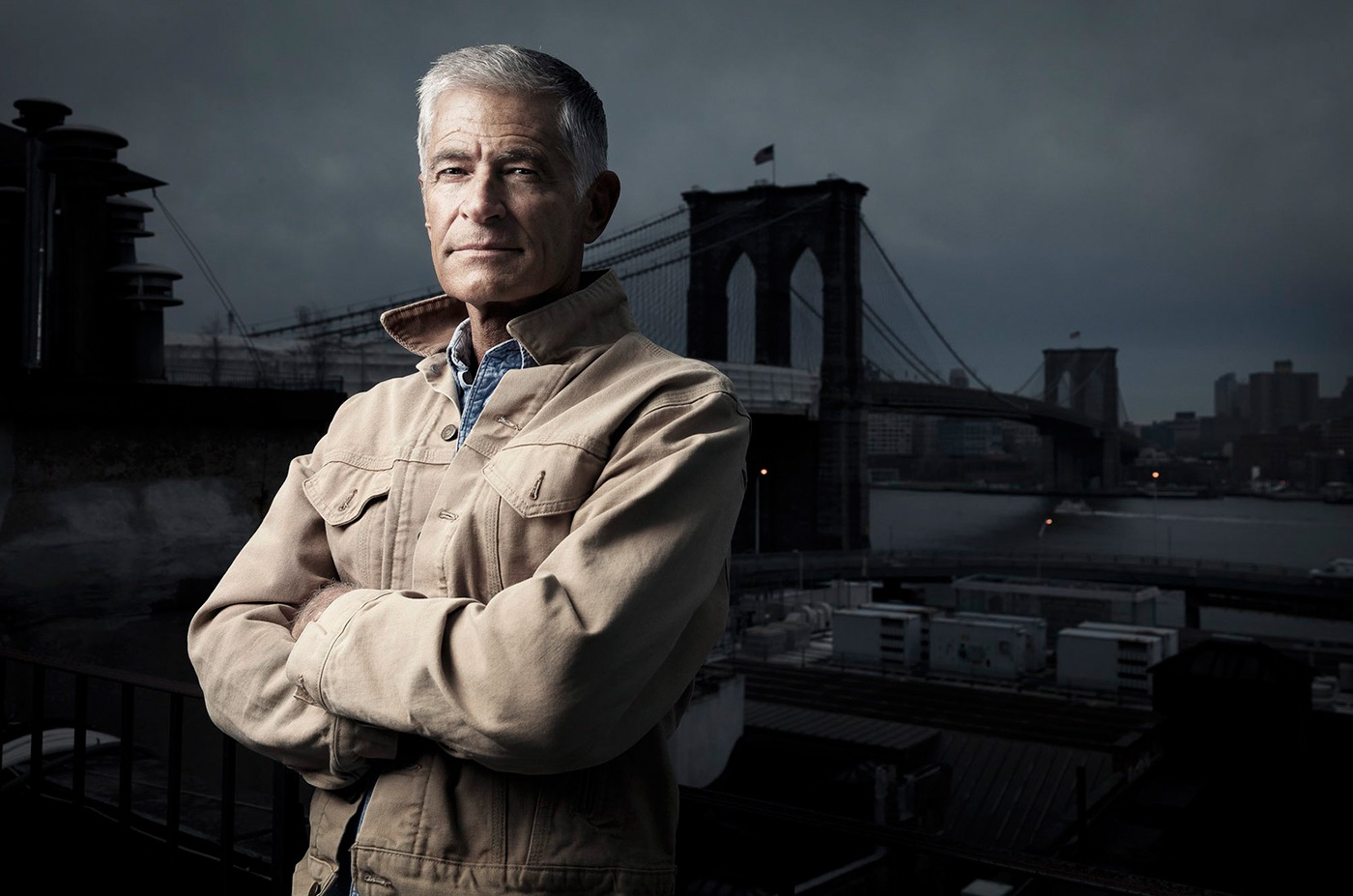
James Nachtwey (born March 14, 1948) is an American photojournalist and war photographer.
He has been awarded the Overseas Press Club’s Robert Capa Gold Medal five times and two World Press Photo awards. In 2003, Nachtwey was injured in a grenade attack on his convoy while working in Baghdad, from which he made a full recovery.
Nachtwey has worked with Time as a contract photographer since 1984.He worked for Black Star (1980–1985), was a member of Magnum Photos (1986–2001) and VII Photo Agency (2001–2011) where he was a founding member.
Inferno
Buy on Amazon

Abstract
Check The Book on AmazonThis is the only major monograph of humanitarian and photojournalist James Nachtwey, five-time winner of the Robert Capa Medal for Photography. Featuring brutally compassionate photographs taken from 1990-99, inspired by an overwhelming belief in the human possibility of change, this volume is a definitive selection from Nachtwey’s astonishing portfolio. It documents today’s conflicts and their victims, from Somalia’s famine to genocide in Rwanda, from Romania’s abandoned orphans and ‘irrecoverables’ to the lives of India’s ‘untouchables’, from war in Bosnia to conflict in Chechnya. Inferno is an evocative visual insight into modern history, bringing it disturbingly close to our consciousness.
Sebastiao Salgado

Sebastião Ribeiro Salgado Júnior (born February 8, 1944) is a Brazilian social documentary photographer and photojournalist.
He has traveled in over 120 countries for his photographic projects. Most of these have appeared in numerous press publications and books. Touring exhibitions of this work have been presented throughout the world.
Salgado is a UNICEF Goodwill Ambassador. He was awarded the W. Eugene Smith Memorial Fund Grant in 1982, Foreign Honorary Membership of the American Academy of Arts and Sciences in 1992 and the Royal Photographic Society’s Centenary Medal and Honorary Fellowship (HonFRPS) in 1993.
Sebastiao Salgado on Wikipedia
Workers
Buy on Amazon

Abstract
Check The Book on AmazonMore than those of any other living photographer, Sebastião Salgado’s images of the world’s poor stand in tribute to the human condition. His transforming photographs bestow dignity on the most isolated and neglected, from famine-stricken refugees in the Sahel to the indigenous peoples of South America. “Workers” is a global epic that transcends mere imagery to become an affirmation of the enduring spirit of working women and men. The book is an archaeological exploration of the activities that have defined labor from the Stone Age through the Industrial Age, to the present. Divided into six categories–“Agriculture,” “Food,” “Mining,” “Industry,” “Oil” and “Construction”–the book unearths layers of visual information to reveal the ceaseless human activity at the core of modern civilization. Extended captions provide a historical and factual framework for the images. “Salgado unveils the pain, the beauty, and the brutality of the world of work on which everything rests,” wrote Arthur Miller of this photobook classic, upon its original publication in 1993. “This is a collection of deep devotion and impressive skill.” An elegy for the passing of traditional methods of labor and production, “Workers” delivers a message of endurance and hope.
Gordon Parks

Gordon Roger Alexander Buchanan Parks (November 30, 1912 – March 7, 2006) was an American photographer, musician, writer and film director, who became prominent in U.S. documentary photojournalism in the 1940s through 1970s—particularly in issues of civil rights, poverty and African-Americans—and in glamour photography.
As the first famous pioneer among black filmmakers, he was the first African American to produce and direct major motion pictures—developing films relating the experience of slaves and struggling black Americans, and creating the “blaxploitation” genre. He is best remembered for his iconic photos of poor Americans during the 1940s (taken for a federal government project), for his photographic essays for Life magazine, and as the director of the 1971 film Shaft. Parks also was an author, poet and composer.
Gordon Parks: A Harlem Family
Buy on Amazon
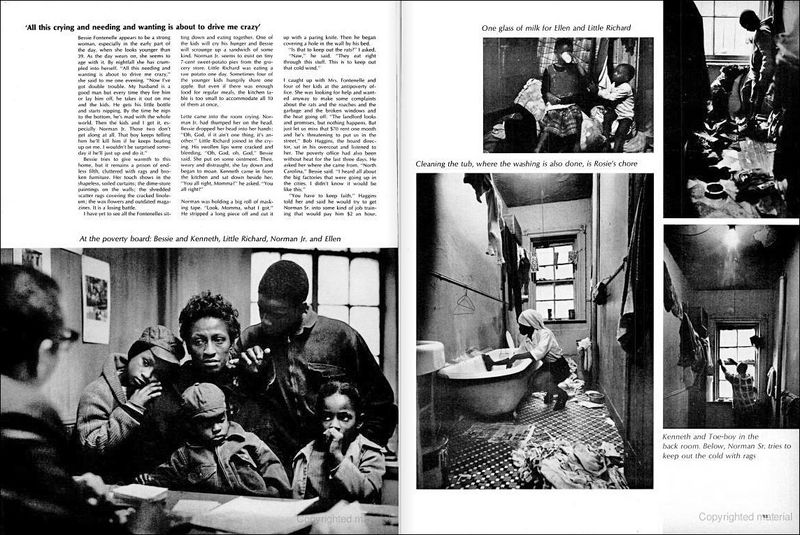
Abstract
Check The Book on AmazonA Harlem Family 1967 honors the legacy and the work of late iconic artist and photojournalist Gordon Parks, who would have turned 100 on November 30, 2012. The exhibition catalogue is co-published by The Studio Museum in Harlem and The Gordon Parks Foundation and features approximately 80 black-and-white photographs of the Fontenelle family, whose lives Gordon Parks documented as part of a 1968 Life magazine photo essay. A searing portrait of poverty in the United States, the Fontenelle photographs provide a view of Harlem through the narrative of a specific family at a particular moment in time.
Josef Koudelka
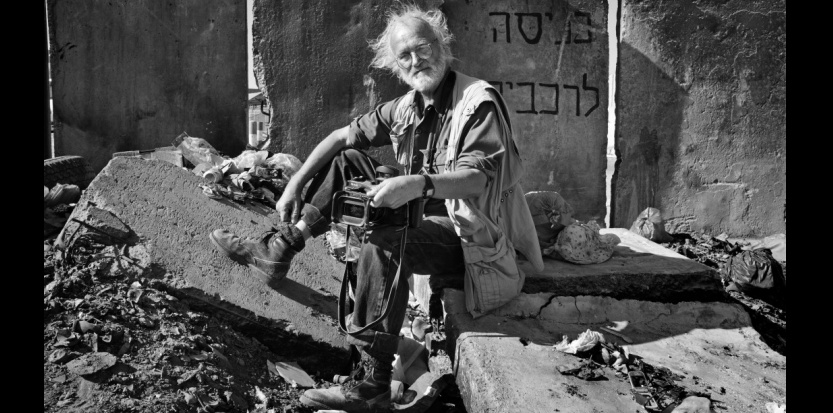
Josef Koudelka, born in Moravia, made his first photographs while a student in the 1950s. About the same time that he started his career as an aeronautical engineer in 1961 he also began photographing Gypsies in Czechoslovakia and theater in Prague. He turned full-time to photography in 1967.
The following year, Koudelka photographed the Soviet invasion of Prague, publishing his photographs under the initials P. P. (Prague Photographer) for fear of reprisal to him and his family. In 1969, he was anonymously awarded the Overseas Press Club’s Robert Capa Gold Medal for those photographs.
Koudelka left Czechoslovakia for political asylum in 1970 and shortly thereafter joined Magnum Photos. In 1975, he brought out his first book Gypsies, and in 1988, Exiles. Since 1986, he has worked with a panoramic camera and issued a compilation of these photographs in his book Chaos in 1999. Koudelka has had more than a dozen books of his work published, including Invasion Prague 68 (2008), and, most recently, La Fabrique d’Exils (2017).
Exiles
Buy on Amazon

Abstract
About Exiles, Cornell Capa once wrote,
Koudelka’s unsentimental, stark, brooding, intensely human imagery reflects his own spirit, the very essence of an exile who is at home wherever his wandering body finds haven in the night.In this newly revised and expanded edition of the 1988 classic, which includes ten new images and a new commentary with Robert Delpire, Koudelka’s work once more forms a powerful document of the spiritual and physical state of exile. The sense of private mystery that fills these photographs—mostly taken during Koudelka’s many years of wandering through Europe and Great Britain since leaving his native Czechoslovakia in 1968—speaks of passion and reserve, of his rage to see. Solitary, moving, deeply felt and strangely disturbing, the images in Exiles suggest alienation, disconnection and love. Exiles evokes some of the most compelling and troubling themes of the twentieth century, while resonating with equal force in this current moment of profound migrations and transience.
Walker Evans
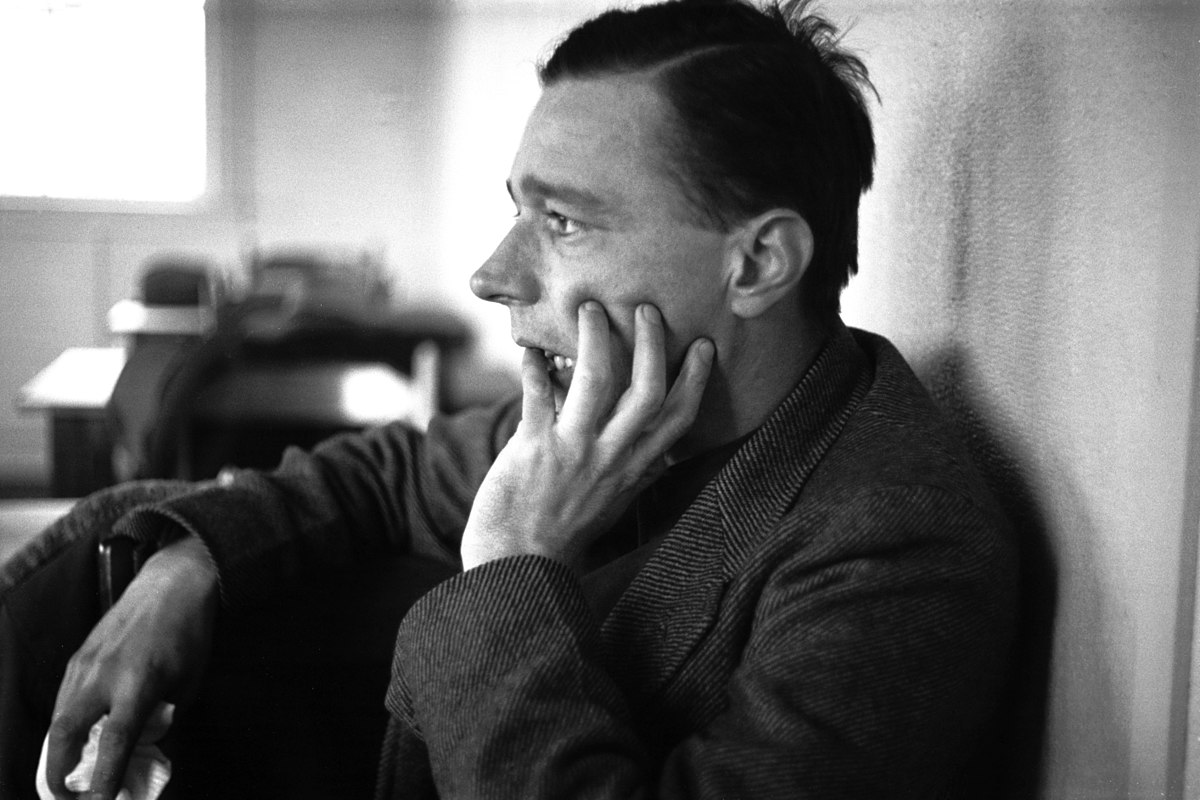
Walker Evans (November 3, 1903 – April 10, 1975) was an American photographer and photojournalist best known for his work for the Farm Security Administration (FSA) documenting the effects of the Great Depression. Much of Evans’s work from the FSA period uses the large-format, 8×10-inch (200×250 mm) camera. He said that his goal as a photographer was to make pictures that are “literate, authoritative, transcendent”. Many of his works are in the permanent collections of museums and have been the subject of retrospectives at such institutions as The Metropolitan Museum of Art or George Eastman House.
Let Us Now Praise Famous Men
Buy on Amazon
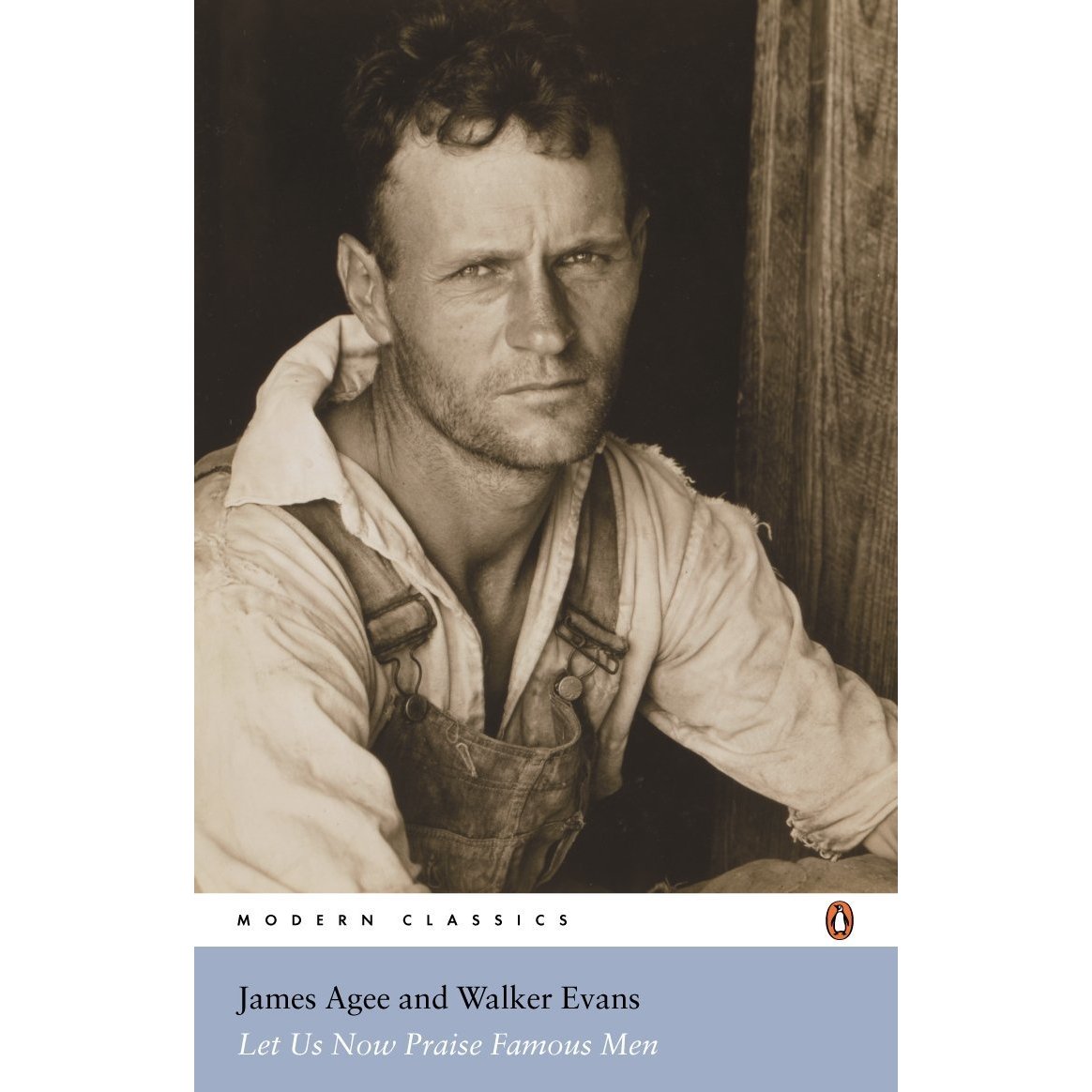
Abstract
Check The Book on AmazonIn the summer of 1936, James Agee and Walker Evans set out on assignment for Fortune magazine to explore the daily lives of sharecroppers in the South. Their journey would prove an extraordinary collaboration and a watershed literary event when, in 1941, Let Us Now Praise Famous Men was first published to enormous critical acclaim. This unsparing record of place, of the people who shaped the land and the rhythm of their lives, is intensely moving and unrelentingly honest, and today—recognized by the New York Public Library as one of the most influential books of the twentieth century—it stands as a poetic tract of its time. With an elegant new design as well as a sixty-four-page photographic prologue featuring archival reproductions of Evans’s classic images, this historic edition offers readers a window into a remarkable slice of American history.
Dorothea Lange

Dorothea Lange (May 26, 1895 – October 11, 1965) was an American documentary photographer and photojournalist, best known for her Depression-era work for the Farm Security Administration (FSA). Lange’s photographs humanized the consequences of the Great Depression and influenced the development of documentary photography.
Daring to Look: Dorothea Lange’s Photographs and Reports from the Field
Buy on Amazon

Abstract
Check The Book on AmazonDaring to Look presents never-before-published photos and captions from Dorothea Lange’s fieldwork in California, the Pacific Northwest, and North Carolina during 1939. Lange’s images of squatter camps, benighted farmers, and stark landscapes are stunning, and her captions—which range from simple explanations of settings to historical notes and biographical sketches—add unexpected depth, bringing her subjects and their struggles unforgettably to life, often in their own words.
When Lange was dismissed from the Farm Security Administration at the end of 1939, these photos and field notes were consigned to archives, where they languished, rarely seen. With Daring to Look, Anne Whiston Spirn not only returns them to the public eye, but sets them in the context of Lange’s pioneering life, work, and struggle for critical recognition—firmly placing Lange in her rightful position at the forefront of American photography.

















